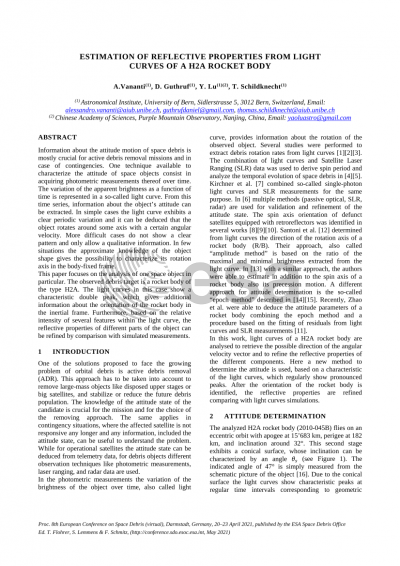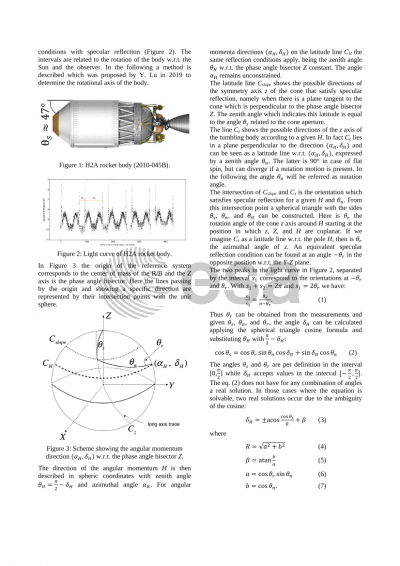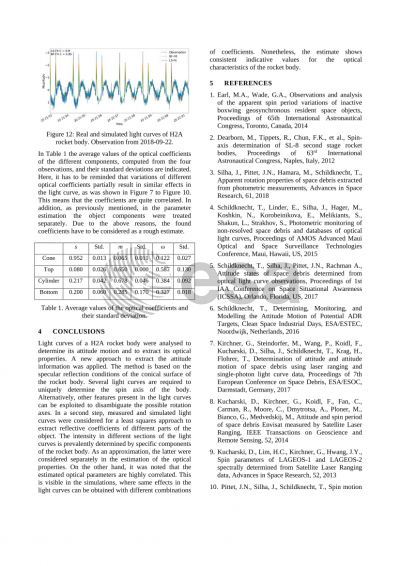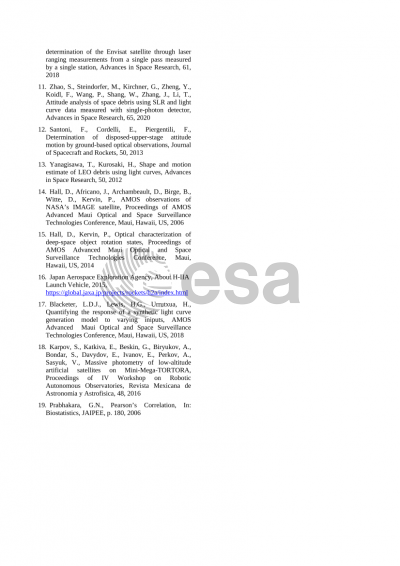Document details

Abstract
Information about the attitude motion of space debris is mostly crucial for active debris removal missions and in case of contingencies. One technique available to characterize the attitude of space objects consist in acquiring photometric measurements thereof over time. The variation of the apparent brightness as a function of time is represented in a so-called light curve. From this time series, information about the object’s attitude can be extracted. In simple cases the light curve exhibits a clear periodic variation and it can be deduced that the object rotates around some axis with a certain angular velocity. More difficult cases do not show a clear pattern and only allow a qualitative information. In few situations the approximate knowledge of the object shape gives the possibility to characterize its rotation axis in the body-fixed frame.
This paper focuses on the analysis of one space object in particular. The observed debris target is a rocket body of the type H2A. The light curves in this case show a characteristic double peak, which gives additional information about the orientation of the rocket body in the inertial frame. Furthermore, based on the relative intensity of several features within the light curve, the reflective properties of different parts of the object can be refined by comparison with simulated measurements.
Preview







